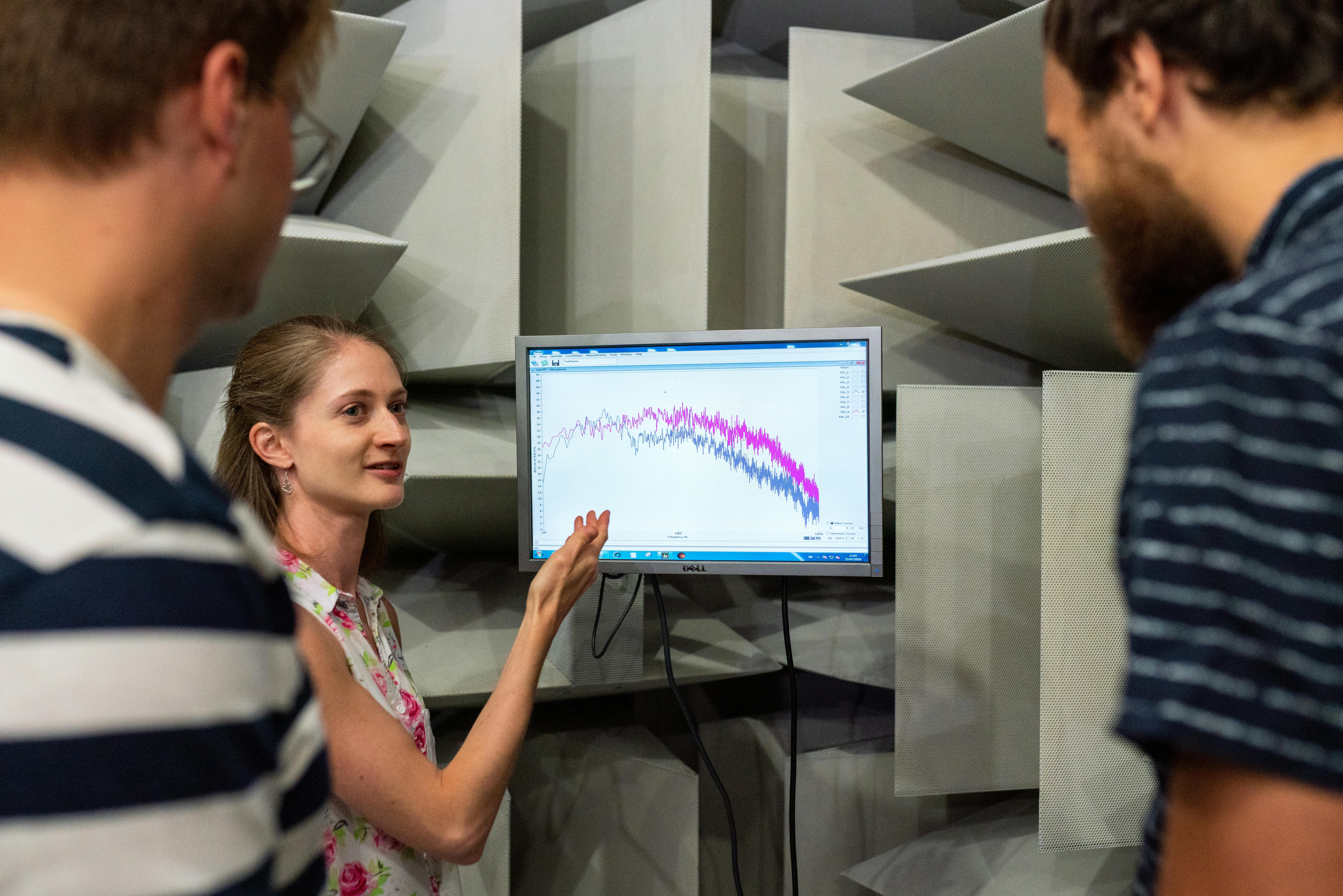Sound has always held a mysterious power over us, but modern cymatic research is finally revealing the stunning visual patterns hidden within every vibration. 🎵
For centuries, humans have been fascinated by the relationship between sound and physical matter. From ancient philosophers observing sand patterns on drums to modern scientists using sophisticated equipment, the journey to understand how sound creates visible patterns has been nothing short of extraordinary. Cymatics—the study of visible sound and vibration—has evolved dramatically in recent years, offering unprecedented insights into the fundamental nature of frequency, matter, and energy.
Today’s cymatic visualization research combines cutting-edge technology with age-old curiosity, revealing patterns that challenge our understanding of physics, biology, and even consciousness itself. These discoveries aren’t just academically interesting; they have practical applications in medicine, materials science, acoustics, and even art therapy.
The Scientific Foundation of Cymatic Patterns
Cymatics derives its name from the Greek word “kyma,” meaning wave. The field gained significant attention in the 1960s when Swiss scientist Hans Jenny published his groundbreaking work documenting how different frequencies create distinct geometric patterns in various mediums. His experiments demonstrated that sound isn’t merely an auditory phenomenon—it’s a force capable of organizing matter into complex, repeatable structures.
Modern cymatic research has expanded far beyond Jenny’s original experiments. Today’s scientists use high-speed cameras, laser interferometry, and computational fluid dynamics to capture and analyze sound patterns with microscopic precision. These advanced tools have revealed that cymatic patterns follow mathematical principles found throughout nature, from spiral galaxies to flower petals.
The physics behind cymatics involves standing wave patterns—areas where waves interfere constructively and destructively to create zones of maximum and minimum displacement. When a vibrating surface contacts a medium like water, sand, or even air particles, the material naturally migrates to areas of least vibration, creating visible nodal patterns that correspond directly to the sound frequency applied.
Breakthrough Technologies Transforming Cymatic Research 🔬
Recent technological advances have revolutionized how researchers observe and document cymatic phenomena. High-resolution digital imaging now captures patterns that were previously invisible to the human eye, while sophisticated software analyzes these patterns in real-time, identifying correlations between frequency, amplitude, and geometric complexity.
Laser vibrometry represents one of the most significant advances in cymatic visualization. This non-contact measurement technique uses laser light to detect surface vibrations with extraordinary precision, allowing researchers to map three-dimensional acoustic fields without disturbing the medium. The resulting data produces detailed visualizations that reveal the intricate architecture of sound waves as they propagate through space.
Another game-changing innovation is the development of acoustic levitation systems. These devices use ultrasound frequencies to suspend small particles or droplets in mid-air, where researchers can observe cymatic patterns forming in three dimensions without the interference of a supporting surface. This technology has opened new avenues for studying how sound structures matter in zero-gravity environments and has implications for everything from pharmaceutical manufacturing to space exploration.
Computational Modeling and AI Integration
Artificial intelligence and machine learning algorithms are now being applied to cymatic research, identifying patterns and correlations that might escape human observation. These systems can predict how specific frequencies will interact with different materials, accelerating research that previously required countless hours of manual experimentation.
Computational fluid dynamics simulations allow scientists to model cymatic behavior virtually before conducting physical experiments. This approach saves resources while enabling researchers to explore extreme conditions—such as very high or very low frequencies—that might be difficult to create in laboratory settings.
Natural Cymatics: Sound Patterns in Living Systems 🌿
Perhaps the most fascinating dimension of recent cymatic research involves discovering how sound patterns influence biological systems. Evidence suggests that cymatic principles operate throughout the natural world, from the microscopic arrangement of cellular structures to the large-scale organization of ecosystems.
Research at several universities has documented how certain frequencies can influence cell behavior, including division rates, migration patterns, and even differentiation into specialized cell types. These findings have profound implications for regenerative medicine and our understanding of developmental biology. The geometric patterns observed in embryonic development often mirror cymatic patterns, suggesting that vibrational forces may play a previously unrecognized role in how organisms form and grow.
Plant studies have revealed that specific sound frequencies can enhance growth rates, improve nutrient uptake, and increase resistance to environmental stressors. Agricultural researchers are exploring practical applications of these findings, developing acoustic stimulation systems that could revolutionize sustainable farming practices without chemical interventions.
The Cellular Symphony
At the molecular level, proteins and other biomolecules vibrate at specific frequencies as they perform their functions. Recent research suggests these vibrations aren’t random but form coordinated patterns that facilitate cellular communication and function. This “molecular cymatics” perspective is reshaping how we understand biochemistry, suggesting that cells may use vibrational signaling alongside the chemical and electrical signals already well-documented in biology textbooks.
Medical Applications: Healing Through Frequency ⚕️
The medical field has shown increasing interest in cymatic research, particularly regarding therapeutic applications of targeted sound frequencies. Ultrasound therapy, already well-established in physical therapy and diagnostic imaging, represents just the beginning of sound-based medical interventions.
Researchers are developing focused ultrasound techniques that can destroy tumors, break up kidney stones, and even temporarily open the blood-brain barrier to deliver medications more effectively. These procedures harness cymatic principles to concentrate acoustic energy precisely at target locations within the body, minimizing damage to surrounding tissues.
Lithotripsy—the use of shock waves to break up kidney stones—has been refined through better understanding of how different frequencies interact with various tissue types and densities. New protocols based on cymatic research achieve better outcomes with fewer treatments and reduced side effects.
Neurological and Psychological Benefits
Brain imaging studies have documented how different sound frequencies create distinct activation patterns in neural tissue. This research has led to innovative treatments for neurological conditions including depression, anxiety, and post-traumatic stress disorder. Binaural beats, which create perception of a third frequency when two slightly different tones are played separately to each ear, have shown promise in modulating brainwave patterns associated with various mental states.
Sound therapy protocols informed by cymatic research are being integrated into psychiatric treatment plans, with some patients experiencing significant symptom reduction when conventional approaches have failed. While more research is needed to fully understand mechanisms of action, preliminary results suggest that precisely calibrated acoustic stimulation can influence neural plasticity and emotional regulation.
Industrial and Engineering Applications 🏗️
Beyond medicine and biology, cymatic research is driving innovations across numerous industries. Materials scientists use acoustic levitation to study the properties of molten metals and other materials that are difficult to contain in traditional vessels. This research has led to development of new alloys with superior properties for aerospace and manufacturing applications.
Acoustic assembly—using sound waves to organize microscopic particles into predetermined patterns—represents an emerging manufacturing technique with applications in microelectronics, pharmaceuticals, and nanotechnology. This non-contact method offers advantages over traditional assembly processes, particularly when working with delicate materials or at microscopic scales.
Architectural acoustics has been transformed by sophisticated modeling of how sound interacts with built environments. Concert halls, recording studios, and public spaces now incorporate cymatic principles to optimize sound quality, reduce unwanted reflections, and create immersive acoustic experiences.
Quality Control and Non-Destructive Testing
Industrial applications of cymatics include sophisticated testing procedures that detect flaws in manufactured components without damaging them. By analyzing how sound waves propagate through materials, engineers can identify internal defects, measure material properties, and ensure quality standards are met throughout production processes.
Artistic Expression Through Cymatic Visualization 🎨
Artists and musicians have embraced cymatic visualization as both an analytical tool and a medium for creative expression. Live performances now incorporate real-time cymatic projections, allowing audiences to see music as well as hear it. These visualizations create multisensory experiences that deepen audience engagement and reveal the hidden architecture of musical compositions.
Digital artists use cymatic principles to generate organic-looking patterns and structures that would be difficult to create through traditional design methods. The resulting works often possess an aesthetic quality that resonates deeply with viewers, perhaps because the patterns reflect natural organizing principles embedded throughout the physical world.
Interactive installations allow visitors to experiment with sound and immediately observe resulting cymatic patterns, creating engaging educational experiences that make abstract acoustic concepts tangible and accessible to general audiences.
Controversial Frontiers: Consciousness and Cymatics 🧠
Some researchers have begun exploring potentially controversial connections between cymatic patterns and consciousness itself. While this remains a speculative area requiring rigorous scientific validation, preliminary investigations suggest intriguing correlations between brainwave patterns, meditation states, and specific geometric configurations observed in cymatic experiments.
Proponents of this research argue that if consciousness involves electromagnetic and biochemical oscillations—as mainstream neuroscience acknowledges—then cymatic principles might offer insights into how subjective experience emerges from physical processes. Critics maintain that such connections remain purely speculative without more robust experimental evidence.
Regardless of where this research leads, it highlights how cymatic visualization techniques are expanding into previously unexpected domains, challenging assumptions and opening new questions about the fundamental nature of reality.
Future Directions and Emerging Research Areas 🚀
The field of cymatic research continues evolving rapidly, with several promising directions emerging. Quantum cymatics explores how acoustic principles might apply at quantum scales, potentially revealing connections between vibrational phenomena and fundamental particles. While highly theoretical, this research could eventually bridge classical and quantum physics in unexpected ways.
Space agencies are investigating how cymatics might function in microgravity environments, with potential applications for manufacturing processes aboard spacecraft and future space stations. The absence of gravity eliminates certain constraints present in Earth-based experiments, potentially revealing new patterns and behaviors.
Environmental scientists are exploring how natural sound patterns influence ecosystem development and stability. Underwater acoustic research has documented how marine life uses and responds to vibrational patterns, information that could inform conservation strategies and help mitigate harmful effects of human-generated noise pollution.
Standardization and Reproducibility
As cymatic research matures, the scientific community is working to establish standardized protocols and measurement techniques. This effort aims to improve reproducibility across laboratories and facilitate comparison of results from different research groups. International collaborations are forming to share data, methodologies, and best practices, accelerating discovery and reducing duplication of effort.
Practical Tools for Exploring Cymatics at Home 🏡
The democratization of technology means cymatic exploration is no longer confined to specialized laboratories. Affordable equipment and smartphone apps now allow enthusiasts to conduct their own experiments and observe sound patterns firsthand.
Basic cymatic setups require only a speaker, an amplifier, a signal generator (which can be a smartphone app), and a medium like water or fine sand. More sophisticated home setups incorporate small cameras to document patterns and lighting systems to enhance visibility. Online communities share techniques, frequency recommendations, and creative approaches to cymatic experimentation.
Educational institutions are incorporating hands-on cymatic demonstrations into science curricula, recognizing their value in making abstract wave concepts concrete and engaging for students of all ages. These activities help develop scientific thinking while inspiring curiosity about the invisible forces shaping our physical world.

The Resonant Future: Where Sound Science is Heading ✨
As research continues revealing the profound influence of vibrational patterns on physical systems, cymatics is transitioning from a niche specialty to a fundamental framework applicable across multiple disciplines. The patterns observed in cymatic experiments appear to reflect universal organizing principles operating throughout nature at every scale.
Integration of cymatic principles with other emerging fields—including synthetic biology, quantum computing, and advanced materials science—promises innovations we can barely imagine today. The ability to precisely control how sound organizes matter opens possibilities for manufacturing techniques, medical interventions, and technologies that harness vibrational forces in entirely new ways.
Perhaps most significantly, cymatic research reminds us that reality is far more dynamic and interconnected than our everyday experience suggests. Everything vibrates, from subatomic particles to galactic clusters, and these vibrations create patterns that influence structure and function at every level of organization.
The journey to fully understand and harness the power of sound has only begun. As visualization technologies improve, computational tools become more sophisticated, and researchers from diverse fields contribute their expertise, we’re likely to discover that sound’s influence extends even further than current evidence suggests. The patterns emerging from cymatic research aren’t merely beautiful—they’re revealing fundamental truths about how the universe organizes itself, one vibration at a time.
Whether you’re a scientist, artist, healer, engineer, or simply someone curious about the hidden dimensions of reality, cymatic research offers profound insights and practical tools. The power of sound isn’t mysterious magic—it’s physics, biology, and chemistry working together in ways we’re only beginning to comprehend. As we continue exploring these vibrational frontiers, who knows what transformative discoveries await? The patterns are there, waiting to be seen, heard, and understood.
Toni Santos is an energy-medicine researcher and subtle-science writer exploring how bio-fields, chakra systems, and frequency therapies shape healing and evolution. Through his investigations into sound medicine, field coherence and energetic design, Toni examines how the invisible dimensions of being become the foundation for presence, transformation and wholeness. Passionate about subtle anatomy, resonance and therapeutic frequency, Toni focuses on how vibration, field awareness and holistic design influence the human system. His work highlights the intersection of science, consciousness, and healing — guiding readers toward living in alignment, resonance and depth. Blending energy medicine, sound healing and field psychophysiology, Toni writes about the landscape of subtle reality — helping readers understand how they inhabit, interact with and expand their energetic fields. His work is a tribute to: The architecture of bio-fields and their role in human vitality The interplay of chakra science, frequency healing and conscious embodiment The vision of subtle medicine as coherent, embodied and whole Whether you are a practitioner, researcher or intuitive explorer, Toni Santos invites you to move into the field of possibility — one vibration, one center, one healing at a time.




